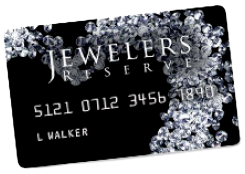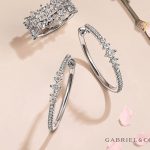Although there is a lot of controversy surrounding whether diamonds are the perfect stone for an engagement ring (and whether they’re worth it!), one thing is for certain: they’re part of a long-standing tradition. If you find that diamonds are what you want, you’ll often be left with two choices: mined diamonds and lab grown diamonds.
While mined diamonds have traditionally been more popular, lab grown diamonds are starting to become even more popular due to their affordability, their overall quality, and their environmentally friendly and sustainable nature. The main selling point is that they are significantly cheaper. You can usually find a lab grown diamond at 30% to 40% of a mined diamond, which is why many lovers in Littleton, CO are interested in them. They’re just as shimmery and sparkly.
Many people, however, do not have a clue how lab grown diamonds are grown. There are two different processes: High Pressure-High Temperature (HPHT) and Chemical Vapor Deposition (CVD). We’ll explain in more detail below.
High Pressure-High Temperature (HPHT)
The High Pressure-High Temperature (HPHT) method involves using a small diamond seed. This seed is then placed into a piece of carbon where it will then be pressurized with approximately 1.5 million pounds per square inch of pressure. This seed and carbon will also be heated to over 2,700 degrees Fahrenheit. Together, the heat and the pressure will melt the carbon and cause it to form around the seed. This is how the diamond is “grown”.
In comparison to the method below, HPHT lab grown diamonds may exhibit uneven color distribution, graining patterns, metallic flux inclusions, and no strain patterns. These identifying markers can be used by GIA scientists to tell them apart from natural diamonds if they have the right equipment and training. These diamonds also grow a bit quicker than the method below; however, that doesn’t usually mean that there’s a huge price difference since experts can grow more than one CVD diamond at a time.
Chemical Vapor Deposition (CVD)
The Chemical Vapor Deposition (CVD) method is slightly different. It still uses a small diamond seed. This diamond seed is then placed in a sealed chamber and heated to a temperature of over 1,400 degrees. As it heats up, the entire chamber is filled with carbon-rich gases like methane and hydrogen, which will then ionize.
CVD essentially breaks down the molecular bond of the gases that are injected into the chamber, so that pure diamond can stick onto the diamond seed and begin to grow. This causes a new diamond to be formed. These diamonds often have some type of coloring to them, so they need to be treated afterward; however, it’s easy to grow more than one diamond at a time.
Once the diamond is grown and treated, it will look identical to a mined diamond. So much so that most people won’t be able to tell a difference unless they have the right type of training.
Is There a Clear Difference Between The Two and Mined Diamonds?
The two methods offer surprisingly identical results to mined diamonds. It’s not surprising. After all, the process basically is the same as how natural diamonds form. The only difference is that we are able to use technology to expedite the process so that the diamonds form within a week or two rather than over the course of centuries. In general, you can form a 1-carat diamond in about a week.
To the visible eye, you really can’t tell the difference. Many machines and detectors also can’t tell a difference between the two different lab grown diamonds and mined diamonds. After all, the chemical composition of these diamonds are all the same. There’s really no difference at all.
In addition, many lab grown diamonds now come with grading reports. You can even get a report from the Gemological Institute of America (GIA). The report includes the 4 C’s of assessment: color, carat, clarity, and cut. These diamonds also have the term “laboratory-grown” laser inscribed into its girdle.
Where Do You Find Lab Grown Diamonds in Littleton, CO?
If you’re interested in using a synthetic diamond as a centerpiece or using it to create a paved look for your ring, find a jeweler that carries these diamonds. They’ll be able to insert them into the engagement ring just like they would with a mined diamond.
Some jewelers will have engagement ring designs available for you to choose from, and others will be able to help you customize the design to better suit your needs and to better suit the diamond that you have chosen. For example, if you’re going with a large carat stone, you might not want to showcase it with a cathedral setting, as it may make the stone seem a bit too much. However, the design really boils down to your preferences. Some people love how much a cathedral can make an already large diamond stand out.
We Can Help You Find the Perfect Engagement Ring
Are you not sure whether you want to go with mined diamonds or lab grown diamonds? Matheu’s Fine Watches & Jewelry can help! Our team of experts in Littleton, CO can show you different types of mined diamonds and lab grown diamonds, so you get a good feel on how they differ from each other. We can show you diamonds of different clarities, cuts, and colors, so you can see what works and what doesn’t. If you’re only concerned about appearance, pay special attention to the color of the diamond and the cut. It can be hard to discern clarity with your naked eye.
Spoiler alert: you won’t be able to tell a difference with the naked eye! Still, we’ll be able to help you find the right carat size, color, and grade that meets your needs and expectations and help you design an engagement ring that will surely surprise your soon-to-be fiancee.
For more information, give us a call at 303-471-8463 or reach out to us online. We’re confident that we’ll be able to help you find the perfect ring to propose to!





